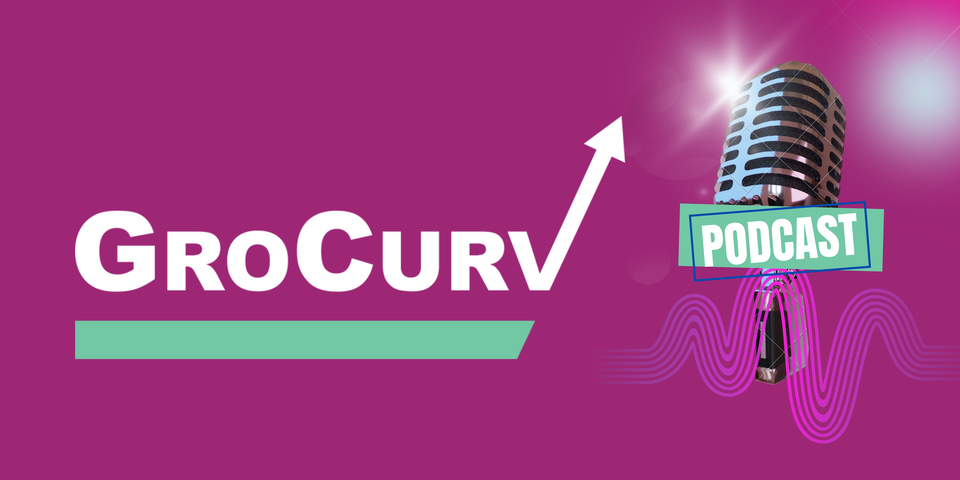Pricing- your most powerful P of marketing

Welcome to GroCurv’s podcast on customer acquisition, called Right On Track. The discipline of focusing on the few things that matter. You can find the link to the podcast here:
As a marketplace for marketing services, GC enables young and fast growing brands to meet and work with the right agency partners.
In this series, we share learnings from hundreds of brands that have used GroCurv and its partner agencies to grow fast, profitably. Allowing you all to learn lessons on how to make the most of your marketing investment.
This week, we focus on Pricing particularly- Price segmentation- the logic of offering different pricing to different customer segments. This is the transcript of our podcast.
In the marketing mix of 4 Ps- product/ pricing/ place/ promotions; this is the P that is least spoken about. Often left to the accountants who determine it keeping an eye on the margin. The P that rules over all other Ps, because your pricing is what gets you money in the bank.
But are we all thinking enough about pricing?
Marketing has now come to accept that pricing is always dictated not by the accountant, but by the perceived value of the product to the customer. While companies will choose the pricing of the goods they’re looking to sell, it’s ultimately the customers who have the final say in what a product is really worth to them. In other words, what you’re selling is only worth as much as a customer is willing to pay for it. Price it too high, you may have too few buyers. Price it too low, and you’re losing margin.
And here is the most challenging lesson for brands, especially the young ones. How do you find the customer that is willing to pay the most for your brand. Do this, and your job of growing the business is half done.
Because when we say my brand is strong: the real test is- what happens when I increase prices.
We see pricing strategies all the time in B2B brands- prices are often negotiated 1-1 and changed based on a multitude of factors- location discounts. Availability discounts. Seasonality. Bulk discounts. Bundling with multiple services. All this is visible every day to a marketer and sales man in B2B. Different customers get different prices basis our ability negotiate with them.

But whats the story for B2C brands?
Can they offer different prices to different customers? Can they price segment?
Price segmentation is a where prices are differentiated based on willingness to pay of the customer. It is driven by the fact that price sensitivity can vary from customer to customer.
For example someone with dry skin, living in colder climates will pay a premium for a brand that effectively nourishes and moisturises skin.
Or someone conscious about organic foods- would not think twice about paying a premium.
Price Segmentation in Practice- 3 examples easy to understand.
- Airline pricing: The pricing increases as you come closer to the date of journey. But then on the few hours before the flight, the price drops again because the airline does not want to leave the seat unsold.
Hotel rooms do this too.
- UBER pricing: Surge pricing, when volume increases, raise prices. Match supply to demand very dynamically.
- Dunzo and other delivery apps – The price of a delivery can change significantly, depending on when that delivery was requested. Delivery apps sometimes charge a premium for late night deliveries.
These examples tell us that pricing is dynamic. It should be changed basis the need of the customer.
Now what we need to understand is how do we use it for our brand..
Price segmentation can be simple enough to implement, it’s just a case of understanding how to segment the market you’re looking to sell to.
You need to understand who buys when and how much.
- You will have folks that buy only when there is a sale. If many of these become regular users over time and continue to buy even without a sale your strategy is set. Keep having sales to get buyers to use your brand. And then wean them off the discounted price. Don’t show them discounts.
- You will find buyers who buy only at specific times of the year….maybe the marriage season/ or the festivals. Even when there Is no sale. That’s a segment.
- Some are volume buyers…who will only buy in large quantities.
- You will have people who buy very specific items. Like a shaving cream on discount. But anytime they buy some other product also, it’s a good idea not to discount the accompanying product.
- If your product is being bought in an aeroplane or in a train- where you have paid to get distribution. Should you discount prices here or increase pricing?
- Weekend pricing is a great strategy in the restaurant/ entertainment business. Where the weeknights are heavily discounted, but the weekends are not.
The key is to understand that pricing is that this isn’t a one-size-fits-all process.
Companies need to find the right granularity, using data on how/ when your customers are buying. And how their buying behaviour changes over time. How is supply and demand meeting and how you can use pricing to better match supply and demand and therefore maximise revenues.
Pricing can completely turn your business economics around, give it some attention.www.grocurv.com
